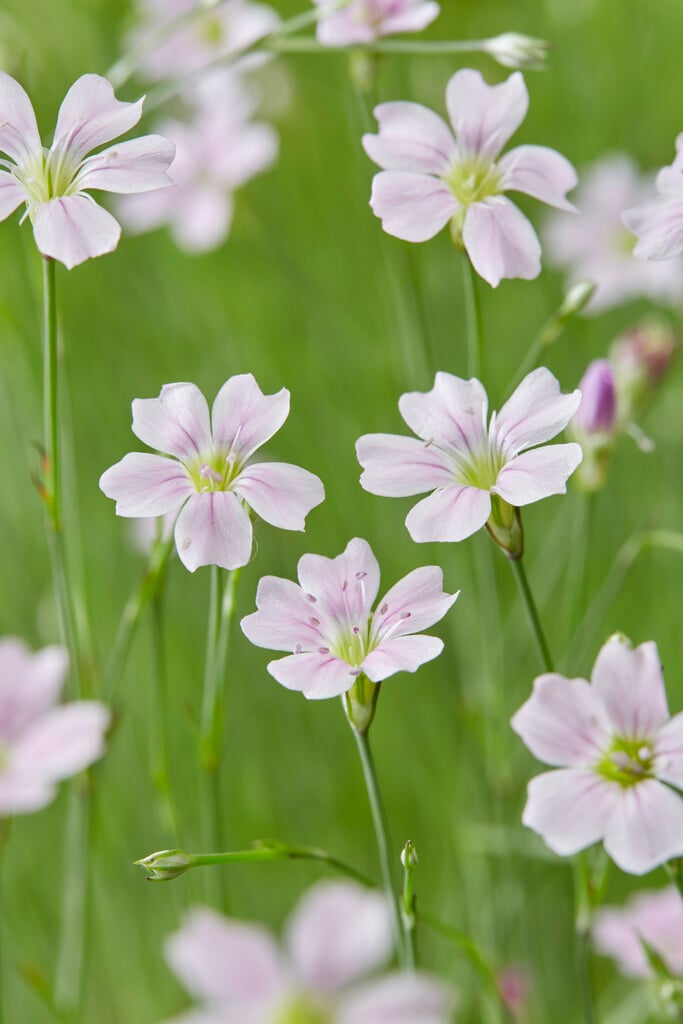Petrorhagia saxifraga
tunic flower
A low-growing, mat-forming, spreading hardy perennial alpine with small, thin green leaves which remain evergreen in milder areas. Small white or pale pink flowers appear in late spring to early summer, lasting through until late . A great alpine for cascading over walls and steps, edging paths or green roofs

Buy this plant
Size
Ultimate height
Up to 10cmTime to ultimate height
2–5 yearsUltimate spread
0.1–0.5 metresGrowing conditions
Moisture
Well–drainedpH
Acid, Alkaline, NeutralColour & scent
| Stem | Flower | Foliage | Fruit | |
| Spring | Pink White | Green | ||
|---|---|---|---|---|
| Summer | Pink White | Green | ||
| Autumn | Green | |||
| Winter | Green |
Position
- Full sun
Aspect
South–facing or West–facing
Exposure
Exposed or ShelteredDrought resistance
Yes Hardiness
H4Botanical details
- Family
- Caryophyllaceae
- Native to GB / Ireland
- No
- Foliage
- Evergreen
- Habit
- Matforming
- Genus
Petrorhagia is a small genus of flowering annuals and perennials, native to Europe and Asia, with low-growing, narrow grass-like foliage and small clusters of pink, lilac or white flowers which are similar to Dianthus
- Name status
Correct
- Plant range
- S & C Europe
How to grow
Cultivation
Grows best in poor to moderately fertile well-drained soil in full sun. Drought resistant once established
Propagation
Sow from seed in spring or autumn in pots with free-draining seed compost. Harden off in a coldframe or greenhouse and plant out when risk of frost has passed.
Suggested planting locations and garden types
- City and courtyard gardens
- Cottage and informal garden
- Gravel garden
- Rock garden
- Ground cover
- Garden edging
Pruning
Cut back after flowering to encourage a second flush of flowers
Pests
Diseases
Generally disease-free
Get involved
The Royal Horticultural Society is the UK’s leading gardening charity. We aim to enrich everyone’s life through plants, and make the UK a greener and more beautiful place.